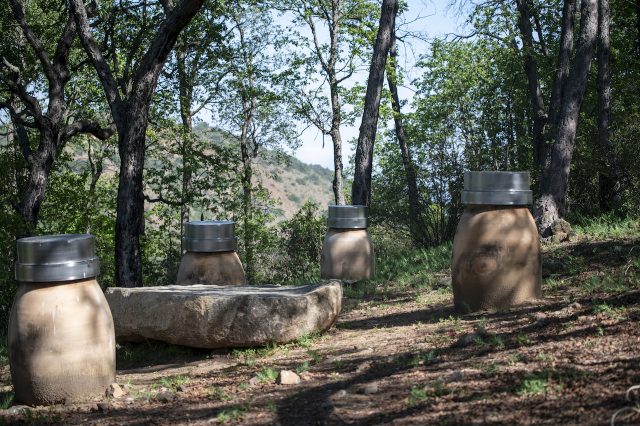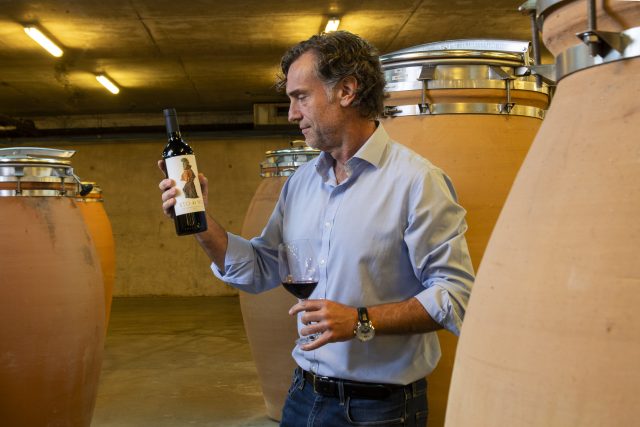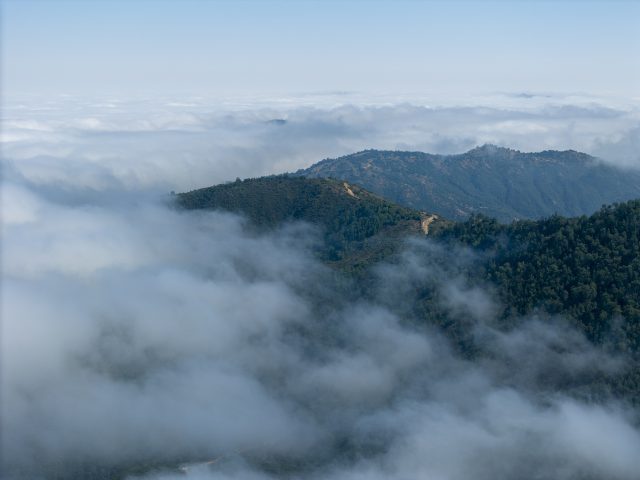This website uses cookies so that we can provide you with the best user experience possible. Cookie information is stored in your browser and performs functions such as recognising you when you return to our website and helping our team to understand which sections of the website you find most interesting and useful.
Has Stone VIK created a new wine category?
Chilean producer VIK believes its ‘circular wine’ is a world first. db discovers the intimate connection to the terroir behind Stone VIK.

Stone VIK, like many innovative projects, began as a challenge. Specifically, it began with the barrels. As a producer of fine red wines, VIK had always recognised the importance of high-quality barrels. Its oak, sourced from a renowned French cooperage, was everything you would expect from a top producer. In short, it fit the archetype of a world-class Chilean producer.
Yet the 20-year-old company also puts particular emphasis on its vineyards and terroir. The realisation that VIK was importing flavours from French barrels posed questions about its ageing philosophy. In fact, it became a challenge. How could the winemaking team express even more of VIK’s Cachapoal landscape in the bottle?
From that first question evolved a practice that winemaker Cristian Vallejo believes is a world first: ‘circular winemaking’. The challenge, which he defines as an effort to capture “the most pure flavour of this place”, reached its apogee this year with the inaugural release of Stone VIK. The project comprises a number of the winery’s recent efforts, as well as a brand new ageing system.
Efforts to reflect terroir
The first element to be introduced was as a direct result of questioning the oak regimen. Dubbed ‘barroir’ the solution was to toast the French barrels with roble oak from their own trees. Taking trees that had naturally fallen on the estate, the cellar team treated both new and old staves for its barrels. In doing so, the VIK estate contributes its own flavours to the wines as they age. The programme is now in place across the VIK range.
The second breakthrough came in the selection of yeasts for winemaking. Although VIK has promoted native yeasts from its foundation, the new programme of ‘fleuroir’ put the landscape at the heart of the process. As suggested by its name, local flowers were integral to the process.
VIK owns around 320 hectares of vines, but this represents just 8% of its total holdings. The rest is a haven for biodiversity, and inspired efforts to bring that remaining 92% of land into the winemaking process. To achieve this Vallejo and his winemaking team harvested flowers across the estate, adding them and their yeast colonies to the must for fermentation. The flowers added diverse yeast strains, including three that had never been found on the grape clusters, thus introducing a further connection to the entire landscape.

As a third aspect to consider, Vallejo turned to soils. Frequently cited as a key component of terroir, he took an ingenious approach to the local soils by using them to make ageing vessels. Working with a local artisan, VIK dug up clay from the estate and used it to create 675 litre capacity amphorae. Referred to as ‘amphoir’, the vessels put the wine in direct contact with local geology, as well as allowing micro-oxygenation without the flavour derived from oak.
Realising a ‘circular wine’
These projects have been a continual act of bringing nature into the winemaking process, and now form part of its core repertoire. However, the Stone VIK project represents “finally putting everything together in one wine”, according to Vallejo, by literally embedding the wine in nature. The aim of the project was to ‘close the circle’ of natural influences by ageing in nature as well.
To achieve this, the VIK team sought a site within the grounds for ageing a new wine. They were captivated by a natural clearing of trees at 1,000 metres altitude, an open circle in mature woodland on the estate. The winemakers brought a team of experts, including a geologist, an astronomer, an astrologist and a shaman, to the site and were impressed by the unanimity of their praise. While the shaman immediately felt its centre as a point of powerful energy, the geologist identified the intersection of a natural fault and a water vein.

This special site therefore became the site of ageing Stone VIK. After the harvest in February and March, the must was fermented using yeasts obtained from ‘fleuroir’. It then underwent malolactic fermentation in barrels created through the ‘barroir’ process. The wine was transferred in April to seven ‘amphoir’ vessels, half buried in the clearing, which had been arranged according to astrological principles.
The Stone VIK wines matured in that setting for the better part of the year. Each grape variety – the cuvée is Cabernet Franc led, with support from Cabernet Sauvignon and Carmenere – was aged separately within the Stone Henge inspired setting. The wines were racked out immediately following the summer solstice on 21 December, ready to be released in January. Stone VIK is therefore a vintage wine, but also a wine created over the course of just 12 months.
A vintage to be proud of
Vallejo believes that Stone VIK is a new frontier for winemaking, but above all he celebrates the quality produced in the first vintage. He describes the red blend as “a beautiful natural wine, with beautiful fruit, acidity that makes you salivate, vibration, movement and dynamism.” Perhaps as the most impressive claim to quality, he compares how VIK’s flagship wine needs 26 months to age in the cellar, whereas Stone VIK reaches his desired quality level in just a year.
Yet, despite the excitement around this new innovation, the producer shows no protectionist impulse in the approach. In fact, Vallejo is hopeful that it will lead the way for other producers. “If somebody else comes to do the same thing,” he says, “obviously it will be different because the terroir will be different, but that will be beautiful because I think this is a new concept for everybody in the world.”


